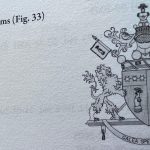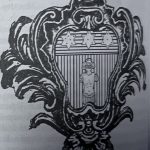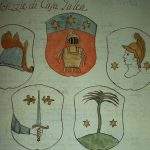Signore’s di Calfudi e San Marciano, 1398.
Last Updated: 16-04-2023.
Granted to: Milite Salvo Cadumi.
By: Mary I, Queen of Sicily and Malta and Martin I, King of Sicily and Malta
On: 1398 in Trapani, Sicily.
With Remainder to: His descendants by feudal tenure (Jure) in perpetuity.
List of Title holders:
1. Milite Salvo Cadumi, 1st Signore, succeeded by his son.
2. Milite Paulo Cadumi, 2nd Signore, succeeded bvy his son.
3. Milite Salvo Cadumi, (c. 1440), 3rd Signore, succeeded by his daughter.
4. Nobile Anna Cadumi Attardo, (c. 1470), 4th Signorina, succeeded by her son.
5. Leonardo Attardo, (1538), 5th Signore, succeeded by his son.
6. Michele Attardo, (c. 1570), 6th Signore, succeeded by her daughter.
7. Nobile Caterina Attardo Debono, (c. 1590), 7th Signorina, sold to the Knights of St John of Malta 1620.
Granted to: Dr Diego Antonio Galea Feriol JUD.
Title: Barone di San Marciano.
By: Manoel de Vilhena, Grand Master of Malta.
On: 1726 in Valletta.
British Crown recognition: 1878.
With Remainder to: Tibi Nobili Didaco Antonio Galea Feriol et post tui obitum, uni ex filiis vel filiabus legitimis et naturalibus ex te legitime procreatis vel procreandis, quem vel quam omni futuro tempore et in perpetuum. Tu et quilibet ex tuis legitimis successoribus in dicta Baronia constitutus seu respective constituta, malueritis eligendum vel eligendam. Et in casu tui vel tuorum in infinitum decessus, absque ulla nominatione vel electione successoris in dicto titulo, ex nunc censeatur nominatus et electus primogenitus nisi erit ad sacros ordines promotus, aut in religione professus, et in defectu marium, foemina primogenita
List of Title holders:
1. Dr Diego Antonio Galea Feriol JUD, 1st Barone, succeeded by his son.
2. Nobile Pietro Paolo Galea Feriol, 2nd Barone, succeeded by his son.
3. Nobile Lorenzo Galea Feriol, 3rd Barone, succeeded by his son.
4. Nobile Giovanni Galea Feriol, 4th Barone, succeeded by his son.
5. Nobile Pietro Paolo Galea Feriol, 5th Barone, succeeded by his son.
6. Nobile Lorenzo Galea Feriol, CMG, 6th Barone, (d. 1833), succeeded by his son.
7. Nobile Pietro Paolo Galea Feriol, 7th Barone, (d. 1884), succeeded by his brother.
8. Nobile Calcedonio Galea Feriol, 8th Barone, (d. 1912), succeeded by nomination by his daughter.
9. Nobile Emilia Galea Feriol Trapani, (d. 1943), 9th Baronessa, (d. 1943), succeeded by her son.
10. Nobile Nicolino Trapani Galea Feriol, 10th Barone, (d. 1963), succeeded by his son.
11. Nobile Gino Trapani Galea Feriol, (1942-, 11th Barone.
Heir: Nobile Michael Trapani Galea Feriol, (1973-, Baroncino di San Marciano.
Heir General: Nobile Tom Trapani Galea Feriol, (2003-.
Claimants (male descendants):
9. Nobile Nicola Galea Feriol, (d. 1915), deJure 9th Barone, succeeded by his son.
10. Nobile Lorenzo Galea Testaferrata, (d. 1930), deJure 10th Barone, succeeded by his brother.
11. Nobile Ignazio Galea Testaferrata, (d. 1939), deJure 11th Barone, succeeded by his brother.
12. Nobile Biagio Galea Testaferrata, (d. 1948), deJure 12th Barone, succeeded by his son.
13. Nobile Mario Galea Testaferrata, (d. 2008), deJure 13th Barone, succeeded by his son.
14. Nobile James Galea Testaferrata, (1960-, deJure 14th Barone.
Heir: Nobile Nicholas Galea Testaferrata, (1995-., (1970-.
Articles relating to this title:
* A Century since the event.
On Monday 25th March 1912, the Daily Malta Chronicle carried this sad announcement:
“We regret to announce the death of the Most Noble Calcedonio Galea, Baron of San Marciano, which took place at the venerable age of 87. The deceased nobleman was distinguished for the piety and philanthropy, which adorned a long and useful life. He is succeeded in the title by his son, Nicolo Baroncino di San Marciano.”
According to approved information, Calcedonio was succeeded by his daughter Emilia wife of Salvatore Trapani.
This means officially Nicolo Galea never succeeded the title.
To unravel this puzzle we have to step a little further back in time.
Calcedonio Galea was the younger son of Lorenzo Galea Feriol, a landowner who also held palaces in Valletta and Mdina.
In 1878, the Report of the Royal Commission appointed to enquire into the claims of the Maltese Nobility paid no importance to the surname Ferriol because their real deal was the patilineal descent.
In 1726 the titles of Baron of San Marciano and Most Illustrious and Noble were granted to Diego Antonio Galea Ferriol by Grand Master Vilhena. The title of baron could only be succeeded through investiture. He was invested in August, two months after the creation. The other two titles were received in September.
The barony was eventually invested in favour of Lorenzo son of Pietro Paolo (9 June 1749), and Giovanni son of Lorenzo (24 November 1791). Both successors are described as “noble”, probably because the September 1726 concession was granted in wide terms to all of Diego Antonio’s descendants.
After the knights’ departure in 1798, titles were formally abolished but they remained the rage. Investitures were obviously no longer possible but no one seemed to be too concerned. This nonchalance appears to have had its basis in the ambivalent record in Volume 627 of the of Archives of the Order concerning the title of Baron of Budaq (“Morto il do Bne Giovanni Pio de Piro non costa, che veruno abbia preso la predetta Investitura.”)
The Most Illustrious and Noble Calcedonio being second born was not expected to succeed any great wealth or title. Matters took a turn when his elder brother Lorenzo died in 1884, without any issue of his own.
By then Calcedonio was already 61 years old and had three children, Nicolo married the daughter of the Marquis Testaferrata Olivier whose title was newly backdated to 1745, a daughter Carmela married to their second cousin the unrecognized Marquis Testaferrata Viani and the other named Emilia married to plain Salvatore Trapani, a magistrate.
Calcedonio may have been impressed by his son’s four children appending their mother’s maiden surname. The Testaferrata marquisates had been invoked by Nicola’s father-in-law Gio Paolo as inheritable by all descendants, including therefore the grandchildren he shared with Calcedonio.
Galea decided to bequest the title of San Marciano to his daughter Emilia. In the above considerations, he might have been motivated to do so by thinking his son’s descendants will all be marquises.
Principles and fanciful plans aside, Emilia was accepted within the noble fold as legitimate successor of the title whilst her brother’s line lived on, its birthright usurped.
Was Calcedonio empowered to do what he wrote in his will? The answer is No!
Although the grant provides for nominations, the Grand Masters reserved the right to refuse investing a nominee in the title.
In 1783 a special Commission appointed by Grand Master Rohan rejected a similar nomination. The affair concerned the succession of the title of Baron of Tabria, which was a title originally created by Grand Master Vilhena and granted on the same terms as San Marciano.
Such nominations the special Commission explained were invalid and had no value. In fact it continued, the title could only be succeeded by the ‘primogenita’ unless assented by the Grand Master. The matter was finally resolved in 1784 when the Grand Master gave his consent.
This reasoning was echoed in the 1878 Commissioners’ Report and the British Colonial Secretary’s summation which distinguished between the only two titles personal to the holders of noble fiefs, and all the other titles (including therefore those that could be ‘nominated’) which were descendible in the order of primogeniture so as to be held only by the eldest male descendants.
The Royal Commission and British Secretary of State for the Colonies ignored anything which was not properly endorsed.
The British policy was not to interfere in matters of succession of Maltese titles, preferring instead to refer any issue to the courts. Some important issues were clarified by the Privy Council, particularly the affirmation in the Catena affair that in primogenital matters the predetermined order of succession is to override nominations, or lack of them.
The 1912 announcement probably cost the job of the editor of the Daily Malta Chronicle. History can now credit him with having understood the rules of correct succession.




